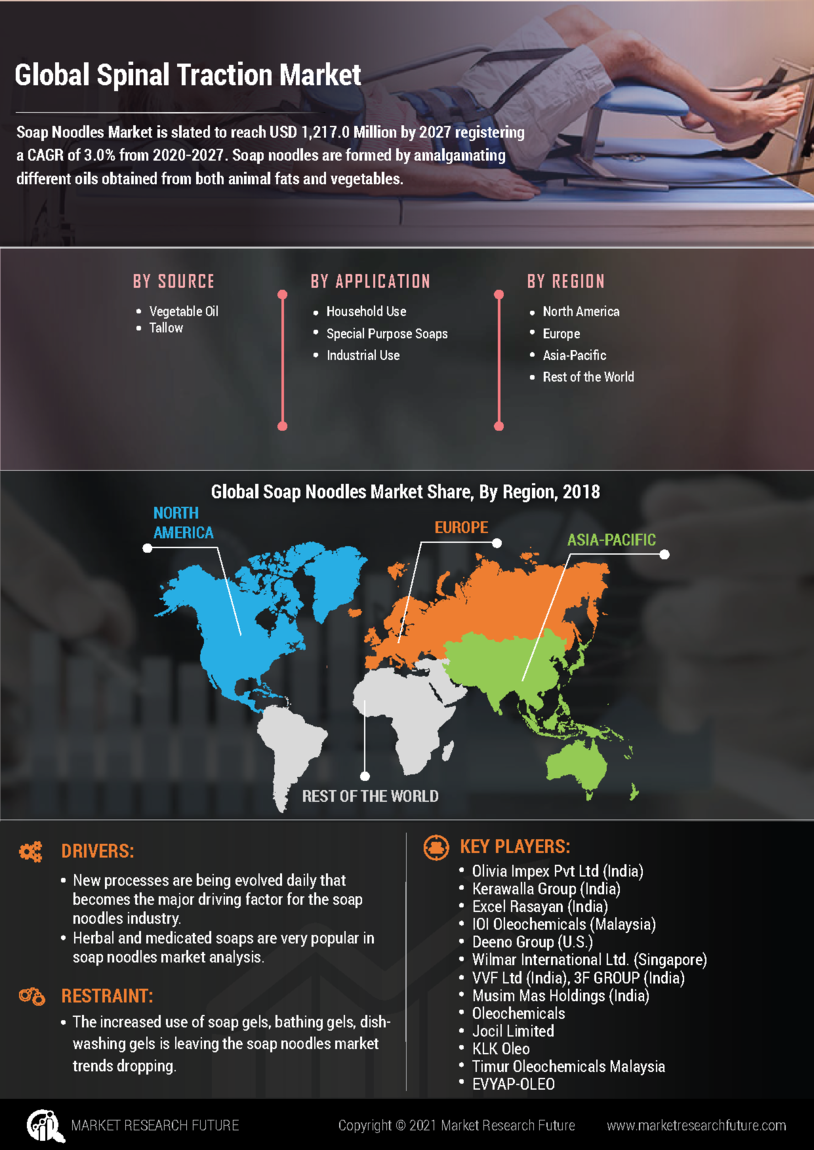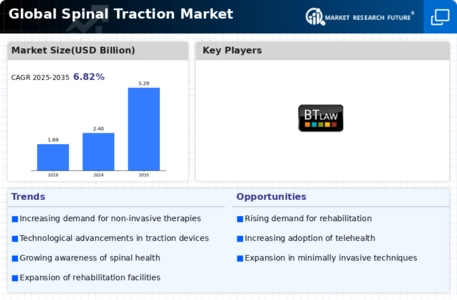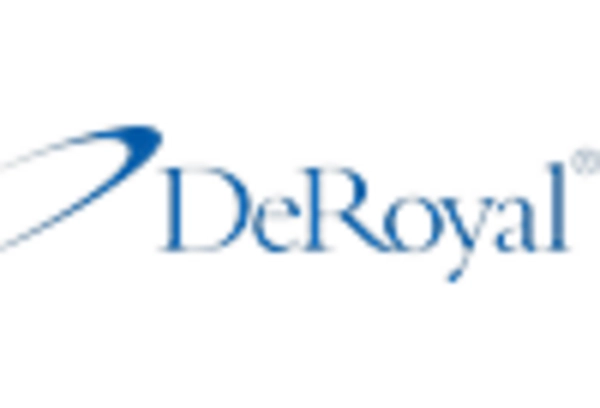Rising Healthcare Expenditure
The upward trend in healthcare expenditure across various regions is significantly influencing The Global Spinal Traction Industry. Governments and private sectors are investing more in healthcare infrastructure, which includes the procurement of advanced medical equipment such as spinal traction devices. This increase in funding is facilitating the adoption of innovative treatment solutions, thereby enhancing patient care. Additionally, as healthcare systems strive to improve service delivery, the demand for effective spinal treatment options is likely to rise. Market analysts project that this trend could lead to a 15% increase in the market value of spinal traction devices over the next few years, reflecting the growing commitment to improving spinal health outcomes.
Advancements in Medical Technology
Technological innovations in spinal traction devices are transforming The Global Spinal Traction Industry. Recent developments include the introduction of automated traction systems that enhance patient comfort and treatment efficacy. These advancements not only improve the precision of traction but also reduce the time required for therapy sessions. Furthermore, the integration of smart technology allows for real-time monitoring of patient progress, which is likely to enhance treatment outcomes. As healthcare facilities increasingly adopt these advanced systems, the market is expected to expand, with a projected increase in sales of high-tech traction devices. This trend indicates a shift towards more sophisticated and effective treatment modalities in spinal care.
Rising Incidence of Spinal Disorders
The increasing prevalence of spinal disorders, such as herniated discs and degenerative disc disease, is a primary driver for The Global Spinal Traction Industry. According to recent health statistics, spinal disorders affect millions worldwide, leading to a growing demand for effective treatment options. This trend is further exacerbated by an aging population, which is more susceptible to musculoskeletal issues. As healthcare providers seek to address these challenges, spinal traction devices are gaining traction as a non-invasive treatment option. The market is projected to grow significantly, with estimates suggesting a compound annual growth rate of over 5% in the coming years. This growth reflects the urgent need for innovative solutions in managing spinal health.
Integration of Rehabilitation Programs
The integration of comprehensive rehabilitation programs into treatment plans is emerging as a key driver in The Global Spinal Traction Industry. Healthcare providers are increasingly recognizing the importance of combining spinal traction with physical therapy and rehabilitation to optimize patient recovery. This holistic approach not only enhances the effectiveness of traction therapy but also promotes long-term spinal health. As rehabilitation programs gain traction, the demand for spinal traction devices is expected to rise correspondingly. Market forecasts suggest that this trend could contribute to a 10% growth in the market, as more healthcare facilities adopt integrated treatment strategies to address spinal disorders comprehensively.
Growing Awareness of Non-Invasive Treatment Options
There is a notable shift towards non-invasive treatment options in The Global Spinal Traction Industry, driven by increased patient awareness and preference for less invasive procedures. Patients are becoming more informed about the risks associated with surgical interventions, leading to a higher demand for alternative therapies such as spinal traction. This trend is supported by healthcare professionals advocating for conservative treatment methods before considering surgery. As a result, the market for spinal traction devices is likely to witness substantial growth, with estimates indicating a potential increase in market size by 20% over the next five years. This growing awareness is reshaping treatment paradigms in spinal health.


















Leave a Comment